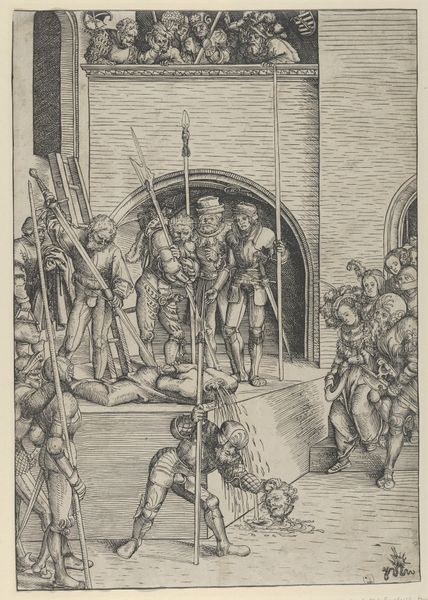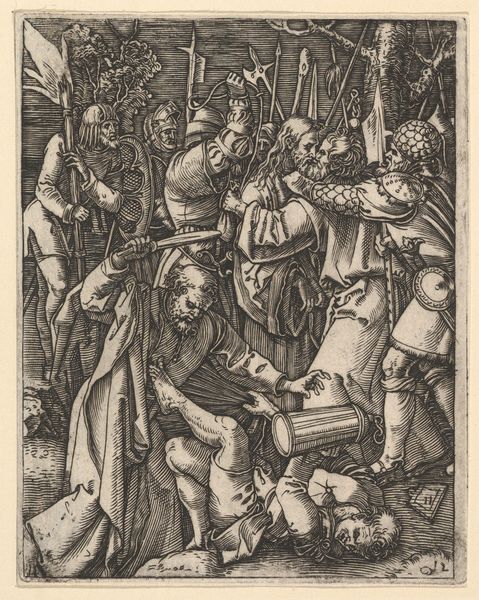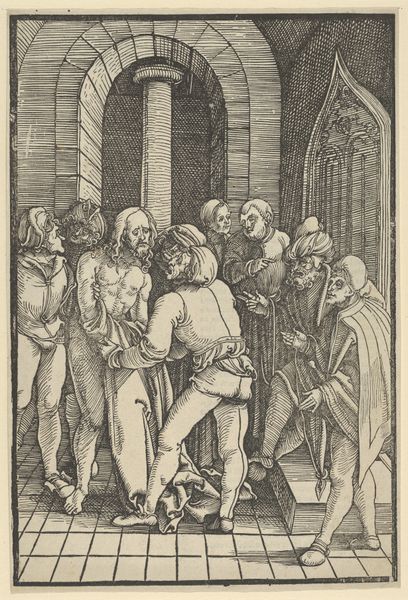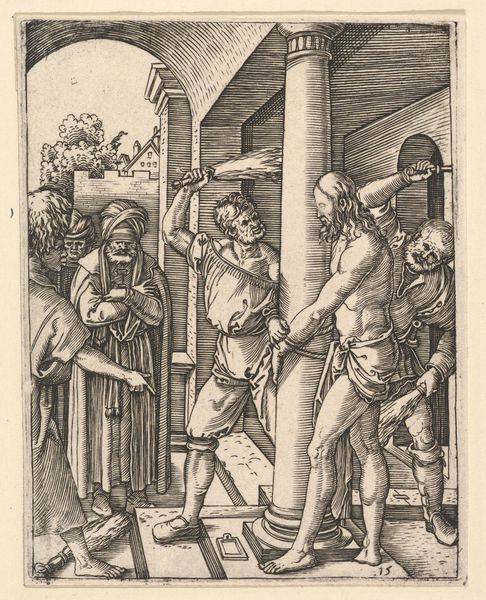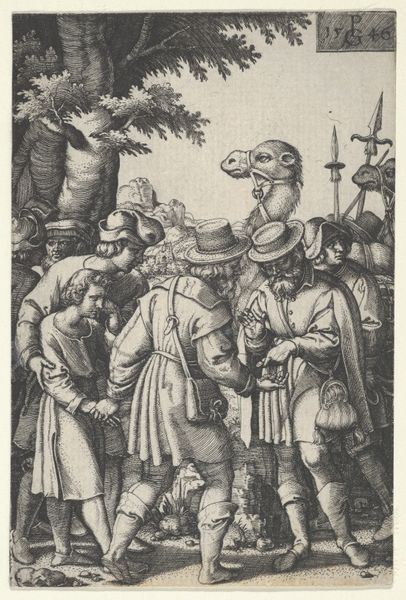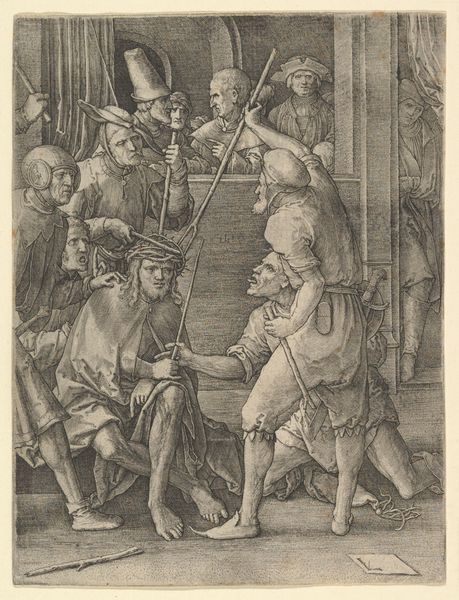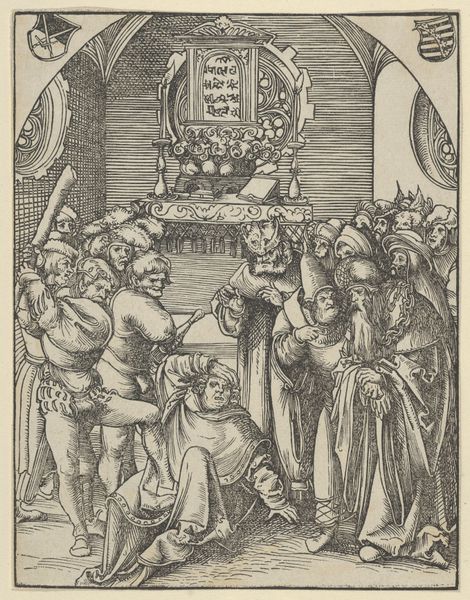
Christ before Annas, from Speculum passionis domini nostri Ihesu Christi 1507
0:00
0:00
drawing, print, woodcut
#
drawing
#
narrative-art
# print
#
pen illustration
#
figuration
#
woodcut
#
history-painting
#
northern-renaissance
#
christ
Dimensions: Sheet: 9 7/16 × 6 1/2 in. (24 × 16.5 cm)
Copyright: Public Domain
Curator: What a striking use of line to depict such raw emotion. Editor: Indeed. We're looking at "Christ before Annas," a woodcut created by Hans Schäufelein in 1507. It's currently held at the Metropolitan Museum of Art. Schäufelein was working during a time of great religious and social upheaval, and his prints often reflect the anxieties of the age. Curator: You can feel that tension in the way Christ is positioned—surrounded, vulnerable, and yet somehow serene. It's fascinating how the artist uses contrasting textures; the intricate folds of fabric versus the coarse faces of the guards, all rendered through linear density. Editor: Absolutely. And consider the broader context. Prints like these, inexpensive and reproducible, played a vital role in shaping popular perceptions of religious figures and events. They brought these narratives to a much wider audience than painted altarpieces ever could. Schäufelein's choice of this medium served a profound purpose. Curator: That makes me think about the composition itself. The architecture—the arches, the tiled floor—seems almost claustrophobic, as if closing in on Christ. But the strong vertical lines of the column and the edges of the fabric create a visual order, framing and elevating the subject. The symmetry emphasizes his calm within chaos. Editor: The circulation of this image would have empowered many. But I cannot ignore how the caricatures employed by Schäufelein perpetuate stereotypes that feed antisemitism and scapegoating that had destructive impacts upon Jewish life during this period. Curator: That's a potent reminder. While appreciating the aesthetic elements, we must also confront the cultural and socio-political implications and how images shape historical narratives, and perpetuate stereotypes that inflict so much social harm. Editor: This woodcut exemplifies art’s complexity—a powerful image made up of technical skill, complex reception history, and difficult, thorny issues of representation and social consequences.
Comments
No comments
Be the first to comment and join the conversation on the ultimate creative platform.
